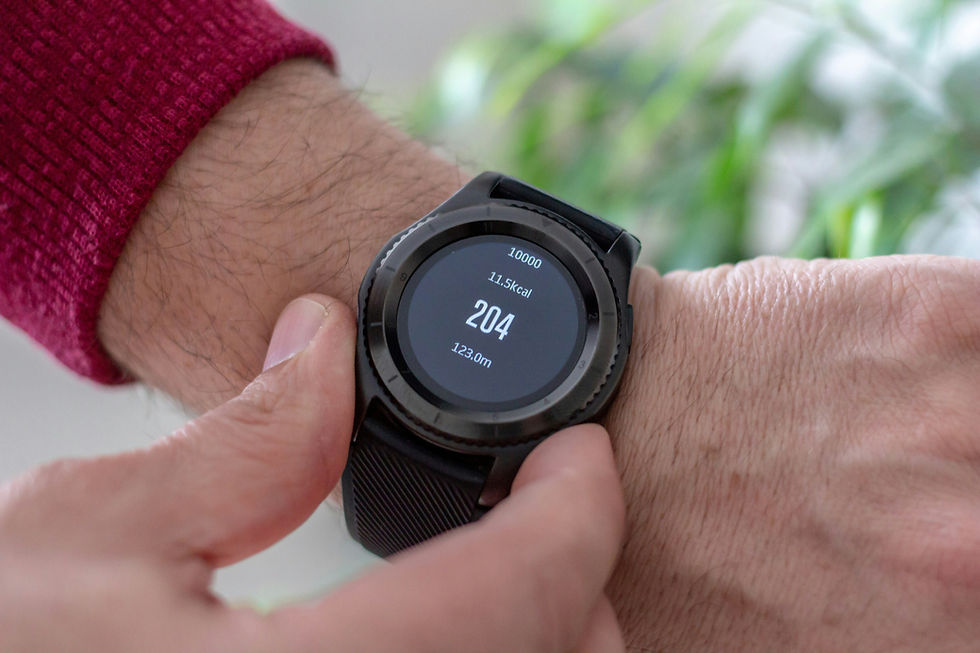Why Dining Out Or Ordering In Can Make Sticking to Your Diet So Hard
- Ryan G.

- May 31
- 4 min read
For anyone trying to lose weight, improve body composition, or simply eat healthier, restaurants can feel like a minefield. Even when you think you’re making a “smart” choice — a salad or a cut of grilled meat or fish — dining out or ordering in often leads to overeating, poor nutrition, and frustrating setbacks.
Here’s why eating restaurant food can often sabotage your goals — and what to watch out for...

1. Hyperpalatable Foods: More Sugar, Fat, and Salt Than You Realize
Restaurant food is designed to wow your taste buds, not your waistline. To make dishes more craveable, chefs routinely load them with added sugars, processed oils, butter, heavy creams, and generous amounts of salt. This combination creates what researchers call hyperpalatable foods, which override your body’s natural satiety signals and make it easy to keep eating long past fullness.
According to a 2019 study published in Cell Metabolism, participants who ate ultra-processed, hyperpalatable meals consumed 500 more calories per day than those eating whole, minimally processed foods — even when meals were matched for macros and calories on paper.¹
2. Low in Fiber (and Less Filling)
One of the key differences between home-cooked meals and restaurant fare is fiber. Whole grains, vegetables, legumes, and other fiber-rich ingredients are often underrepresented on menus — or drowned in sauces, cheese, or dressings that negate their benefits.
Fiber slows digestion, promotes satiety, and helps regulate blood sugar — all critical factors when you’re trying to stick to a diet. Without enough fiber, you’re more likely to experience post-meal hunger and sugar cravings.²
One idea is to ask for extra veggies with your order. Since they're such inexpensive ingredients there often won't even be an up-charge.
3. You Can’t Track What You Can’t See
Even if a menu lists calories or macros, those numbers are often rough estimates at best. Portion sizes can vary wildly between restaurants — and even between visits to the same restaurant. A “grilled salmon salad” might seem like a safe bet, but was that 6 oz. of salmon or 10? Was the dressing portioned out or poured freely?
Add in oils used in the cooking process (often not listed), hidden sugars in sauces, and non-measured extras like bread baskets or “a few fries off someone else’s plate,” and your macro- and calorie-tracking can quickly become guesswork.
As registered dietitian Abbey Sharp explains, “It’s nearly impossible to accurately estimate calories from a restaurant meal unless you watched them make it.”³
4. The “Treat Mentality” and Overeating to Justify the Cost
Eating out is often seen as a reward — a break from the routine, a treat for a special occasion, or simply a way to unwind. That “treat” mentality can lower your dietary defenses and make it easier to rationalize choices that don’t align with your goals:
“I’ve earned this.”
“I’m already here, might as well enjoy it.”
“It would be wasteful not to finish it.”
And since restaurant meals aren’t cheap, many people feel the urge to get their money’s worth by eating every bite — even when they’re full.
5. Social Pressure and Mindless Eating
Eating out is usually a social activity — and that comes with its own dietary challenges. Alcohol, sugary drinks, and shared appetizers can add hundreds of extra calories before your main course even arrives.
You might feel subtle pressure to keep eating or drinking to “match” others at the table (or since you're trapped there until the check comes) or stay occupied during conversation. As one study from the American Journal of Clinical Nutrition found, people tend to eat more in social settings — especially when dining with others who are overeating.⁴
6. Disrupted Routine and Limited Control
When you eat at home, you control everything: the ingredients, the cooking methods, the portions, and the timing. Eating out shifts all that outside of your control.
This disruption can cascade into other issues: eating later than usual, skipping meals to “save room,” feeling sluggish after a heavy restaurant meal, or falling out of your regular workout and sleep patterns. And the fallout from too much fat, sugar or salt can trigger cravings that continue long after the meal is over.
Bottom Line: Proceed With Awareness
Restaurants aren’t off-limits — but if you’re working toward specific health or fitness goals, it’s important to recognize how easily they can throw you off track.
A few strategies that can help:
Look up the menu in advance and plan your order
Split dishes or box up half before you start eating
Skip extras like bread baskets and sugary cocktails
Be mindful of social eating cues and eat slowly
Save eating out for special occasions, not daily defaults
Ultimately, cooking at home — even just a few more times per week — gives you more control over your food, your goals, and your long-term health.
Sources:
Hall, K. D., et al. (2019). Ultra-Processed Diets Cause Excess Calorie Intake and Weight Gain: An Inpatient Randomized Controlled Trial of Ad Libitum Food Intake. Cell Metabolism. https://doi.org/10.1016/j.cmet.2019.05.008
Slavin, J. (2005). Dietary fiber and body weight. Nutrition, 21(3), 411-418.
Sharp, A. (2023). Why restaurant calories are so hard to estimate. Abbey’s Kitchen. https://www.abbeyskitchen.com
de Castro, J. M. (1994). Family and friends produce greater social facilitation of food intake than other companions. Physiology & Behavior, 56(3), 445–455.



Comments